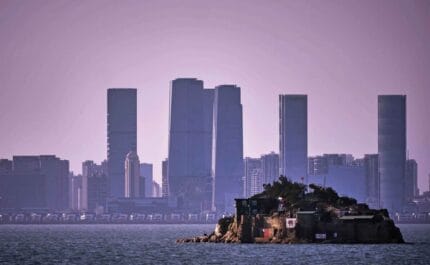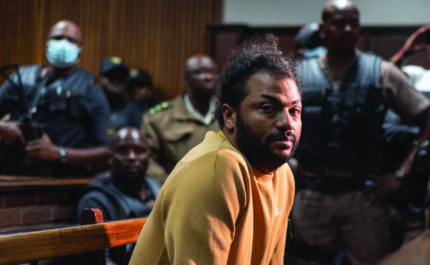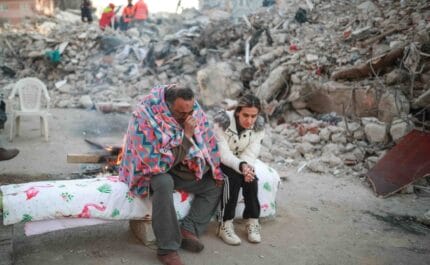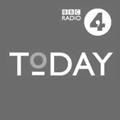Kuwait’s deadliest terror attack revisited
On 26th June 2015, a suicide bomber walked into a Shiite mosque in Kuwait City and blew himself up, killing 27 people and wounding 227. A month later, Jamie Etheridge visited the mosque to report on the fallout
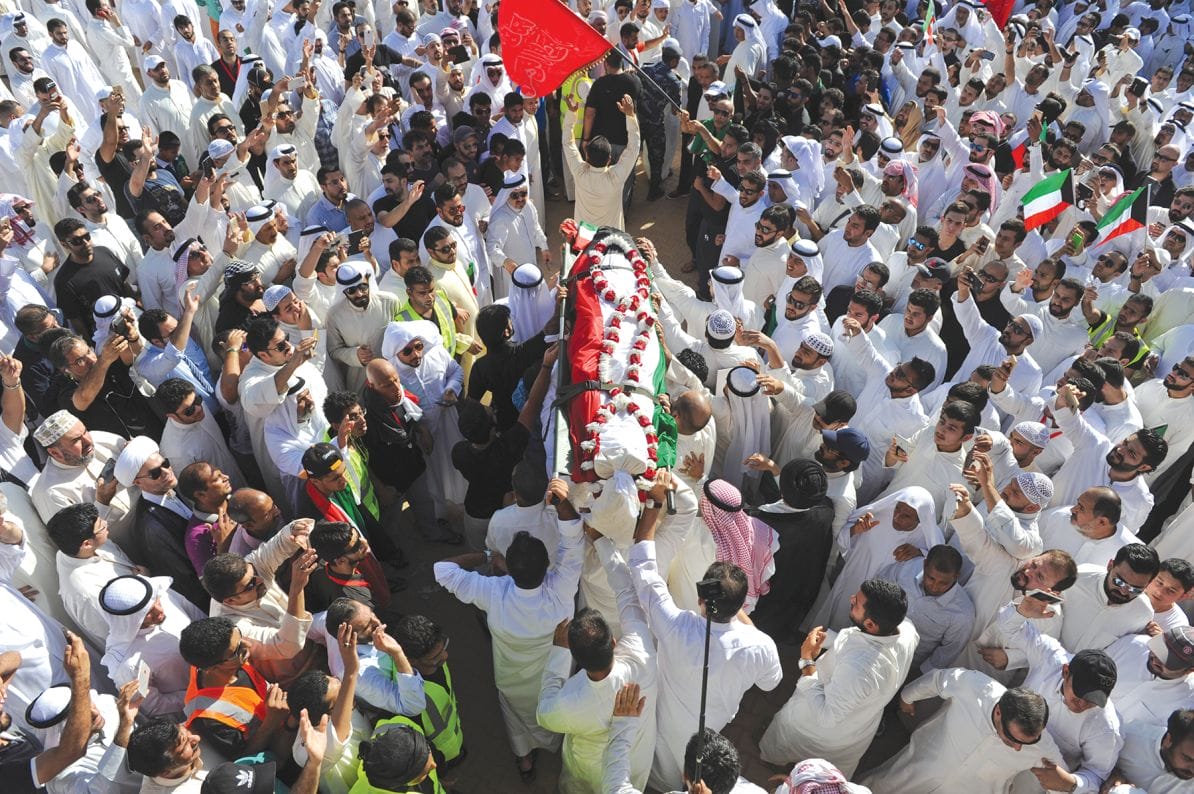
Thousands of Sunnis and Shiites take part in a mass funeral procession for 27 people killed in the suicide bombing at the Imam al-Sadiq mosque. Photo: AP/Press Association Images
26th June 2015 (Taken from: #19)
The Imam al-Sadiq mosque is a squat, sand-coloured structure in the heart of Kuwait’s downtown financial district, just a short walk from the stock exchange. One of the oldest Shiite mosques in Kuwait, it’s also the country’s second largest after the nearby Grand Mosque.
On 26th June it became the site of the worst terrorist attack in Kuwait’s history. A month later and the compound is still cordoned off – a makeshift security checkpoint has been set up and all visitors must pass through a guarded electronic security door. Mobile phones must be turned off and cameras are not allowed.
Outside the police barriers I meet 41-year-old Kuwaiti banker Musaed al-Haddad, who has been coming to the Imam al-Sadiq mosque since he was a child. Tall and well spoken, he explains why he wasn’t at Friday noon prayers on the day of the attack. “I usually attend but because it was Ramadan, I slept late,” he says. “When I heard what happened, I immediately came. I felt it was my obligation.”

The devastated interior of the Imam al-Sadiq mosque, a month after the terror attack of 26th June. Photo: Jamie Etheridge
Al-Haddad arrived about 30 minutes after the bombing. Blood-covered victims were slumped against the walls where they had been placed after being carried out by fellow worshippers. The country’s 89-year-old emir, Sheikh Sabah al-Ahmad al-Jaber al-Sabah, was already there, against the advice of his security staff. Even though he was unsure of what he would find at the mosque, al-Haddad brought along his nine-year-old son Hashim. “I wanted him to see the price of us being who we are,” he explains.
The scene was one of chaos, shock and disbelief. “I saw one of my wife’s relatives and he was covered in blood and he told me: ‘We were just praying, it just happened,’” says al-Haddad. “I didn’t understand the magnitude of the event at first but then it really started to sink in. I started to think about all the people, the relatives I see praying here every day, and I realised they were all in the mosque.”
The mosque has CCTV both inside and out, a precaution against theft and vandalism put in place more than a year ago. The cameras recorded the bomber, and video clips from 26th June were quick to make the rounds on social media in the aftermath of the attack. One of the CCTV clips shows the man, now known to be Saudi national Fahad Suleiman al-Gabbaa, a member of the Isis-affiliated Najd Province group, walking through the door. The camera is focused on the pathway in front of the mosque and just after the bomber enters, a policeman on foot patrol can be seen passing by out front. A second CCTV recording from inside shows al-Gabbaa after he enters the mosque, first turning left off the hallway and then retracing his steps and heading into the main prayer hall. A few seconds pass and then the screen blacks out.
When I looked around and saw people falling and injured and the severity of it all, I knew it was a terrorist attack”
The mosque itself is closed to the public. A thick sheet of cardboard has been nailed to the doorframe of the men’s entrance, where al-Gabbaa went in. The original was blown off in the blast. Inside, the air is thick and heavy. The entire space remains as it was left on that day, littered with broken glass, shoes, prayer beads and prayer mats. There are hundreds of round turbah – the small pieces of clay earth from Karbala, a holy city in Iraq, that many Shiites use during prayer – scattered on the floor.
I sit with mosque official Abdulnabi Mansour al-Attar inside the diwaniya, a small meeting place inside the mosque. Al-Haddad translates as we watch the CCTV videos again and talk about the bomber: how he entered, why he did it and why he chose this mosque. After a cup of water to combat the stifling July heat, we carefully pick our way into the main prayer hall.
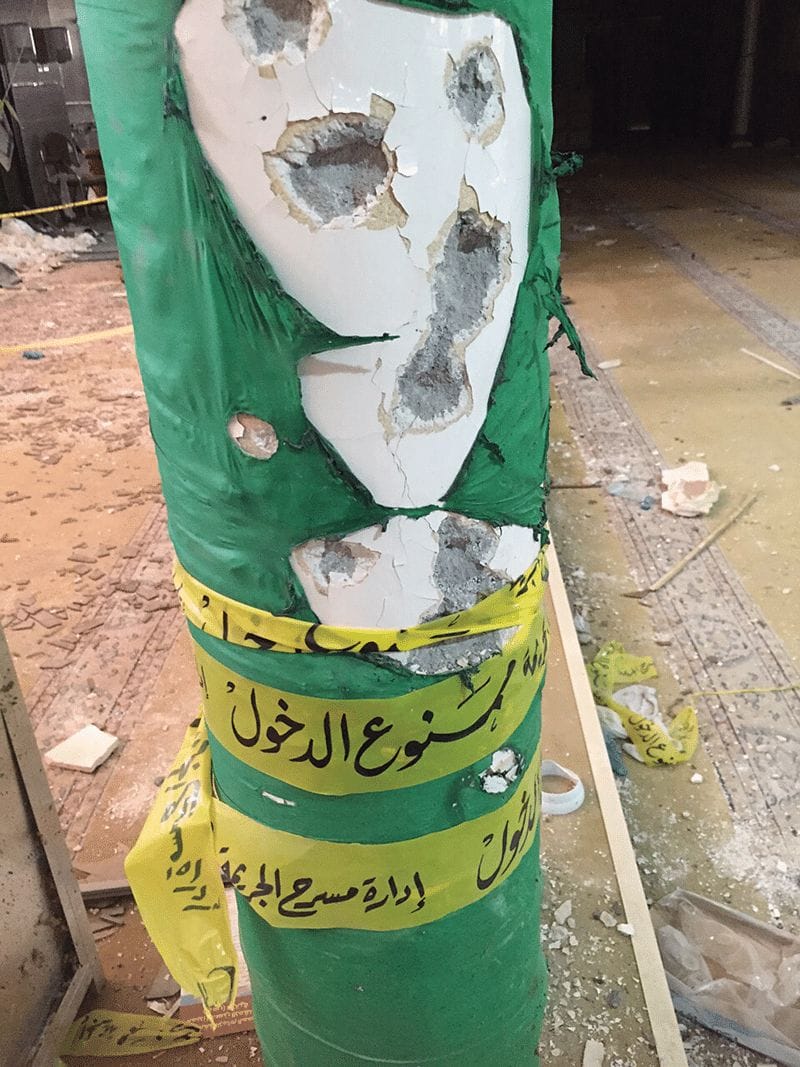
Damage caused by the blast. Photo: Jamie Etheridge
Al-Attar was here on the day of the bombing, praying in one of the last rows just a few feet away from where the bomber entered. “He walked in and said [in Arabic], ‘God is with the patient ones,’ a typical greeting latecomers will utter upon entering the mosque,” al-Attar explains. “The aim is to let the imam know that someone has entered and wants to join the prayer. Typically it indicates for the imam to prolong the current position so the late arrival can join in. But this can only be done during certain parts of the prayer and not when worshippers are prostrate, in what is called sujood position.”
“As you can see from the video, the worshippers were already on the floor in sujood,” al-Attar points out. “This actually served as a grace because in the explosive belt the bomber had steel pellets which were intended to pierce the bodies of the worshippers, but thank God they were mostly prostrate so it flew over most of their heads, striking only the elderly in the back rows who could not kneel on the ground.”
Al-Attar shows me the spot where the bomber stood, the carpet cut up by the security forces in order to collect the attacker’s DNA. Charred remains – bits of blood and flesh – are seared into the doorframe and wall behind us. More dark matter is embedded in the window casing in the women’s prayer room upstairs. That room overlooks the main prayer hall: five plate-glass windows which separated the women’s area from the men below were blown out by the blast. Tiny holes from the steel pellets pockmark the walls, doorways and tile floors.
The main prayer hall is designed to hold between 2,000 and 2,500 worshippers. During Ramadan, attendance climbs even higher: according to al-Attar, the fact that the room was so packed on 26th June probably saved hundreds of lives as the late-arriving bomber was unable to push into the crowd of worshipers and was forced to stand at the back. A massive glass chandelier hangs 30 feet above us in the central dome of the prayer hall. Had the bomber moved further into the room, the blast might well have caused the chandelier to come crashing down onto the heads of the worshippers.
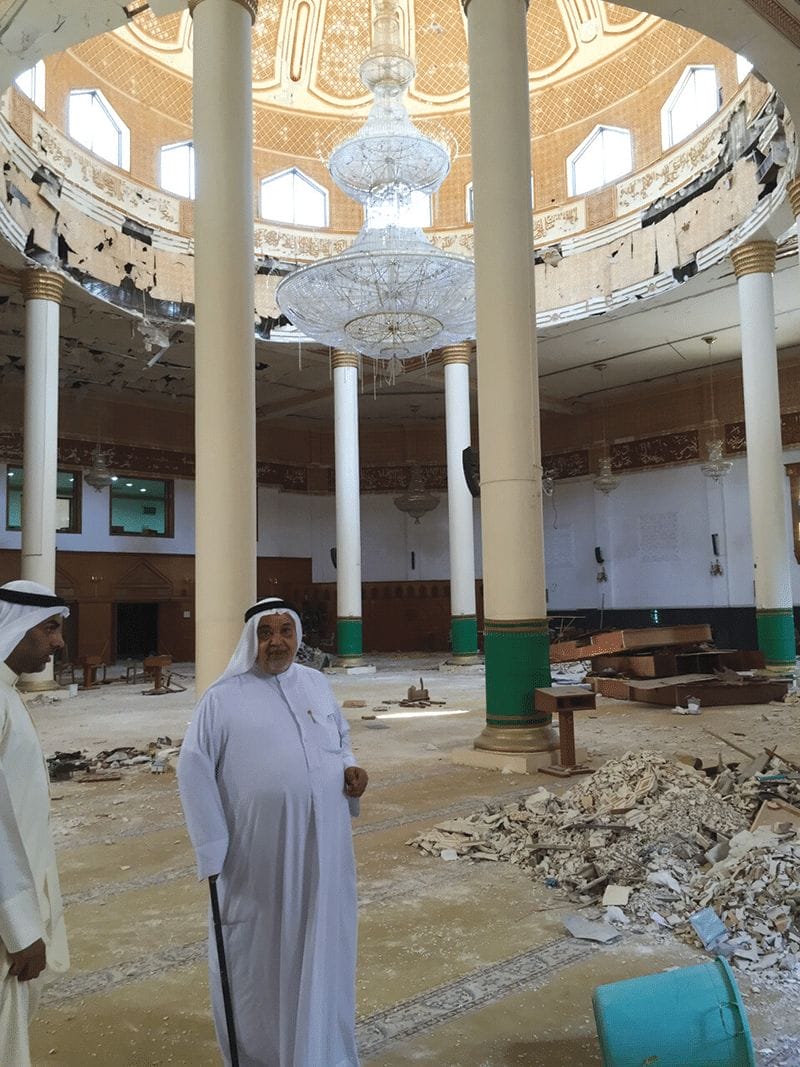
Mosque official Abdulnabi Mansour al-Attar inspects the interior of the mosque after the attack. Photo: Jamie Etheridge
“At first I thought it was an electricity problem,” says al-Attar. “When I stood up, I saw the door frame had caught fire and I thought I should quickly put it out. But when I looked around and saw people falling and injured and the severity of it all, I knew it was a terrorist attack.” Al-Attar, who knew most of those who died, finds comfort in the fact that the close friends who perished in the blast died while in prayer, inside a mosque while fasting during Islam’s holy month. Still he pauses and catches his breath when describing that day.
“We’re made of feelings, we’re human and these are all my friends,” he says. “But I couldn’t allow myself to be overtaken by emotions. Action was needed. I didn’t know which of my friends or family were alive or dead; I just had to focus and work with the authorities. Later I found out that my first cousin died, my closest friend died, as well as people who worked with me in the mosque, people I considered my brothers. I saw them every day, worked with them and knew their sons.”
Eight of the victims were flown to Iraq, to the Shiite holy city of Najaf, on the emir’s private jet. Al-Attar went with the delegation to help with the burials. Though elderly himself, he then returned to Kuwait and attended the mass condolence service at the Grand Mosque. The events eventually took their toll, however, and al-Attar collapsed and was hospitalised. But now he is back at work and determined not to let the attack change him. He is keen to stress that the attackers do not reflect the true nature of Islam. “These are foreigners coming from outside,” he says. “They are brainwashed to spread hatred and they don’t have any morals. What happened in Tunisia, in France – they do not distinguish between who they kill.”
“The true nature of the Kuwaiti people”
Terror attacks on mosques, tourist spots and souks have become a frequent occurrence in much of the Middle East, and sectarian attacks are all too common in Iraq and neighbouring Saudi Arabia, but both are rare in Kuwait.
The emirate has a long tradition of religious inclusiveness. Shiite Kuwaitis, who make up around 30 percent of the population, are well-represented in government, business and society. Shiite mosques can be found across the country and Shiite Kuwaitis can trace their origins back to the earliest days of Kuwait’s settlement. There have been some sectarian tensions, largely played out in parliament between rival lawmakers. But this is mostly held in check by a government that repeatedly warns that the stoking of divisions will not be tolerated.
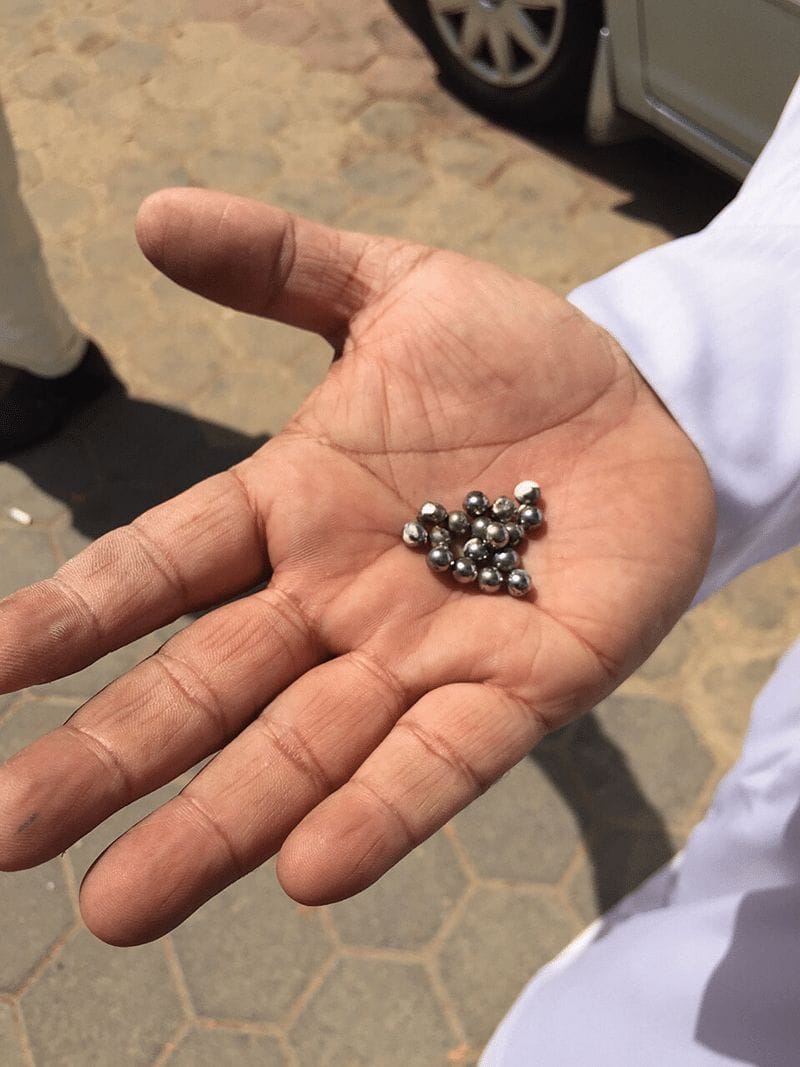
Steel pellets from the explosive belt. Photo: Jamie Etheridge
Kuwait’s Shiite population is divided into two distinct communities, who pray at different mosques and who respectively trace their heritage back to Arab and Persian groups. The Imam al-Sadiq is a Hasawi mosque, referring to the community of believers who pray there, who are typically from families whose origins can be traced back to the al-Hasa region in what is now eastern Saudi Arabia.
The targeting of Hasawis was deliberate. They are often the first target of radicals in neighbouring Saudi Arabia, who view all Shiites, but especially those closest to home, as heretics. Just a month before the Kuwait attack, on 22nd May, a suicide bomber blew himself up during Friday prayers at a Shiite mosque in al-Qudaih in Saudi Arabia in the area formerly known as al-Hasa. But Kuwait didn’t view the on 26th June attack as a Hasawi or Shiite problem. It was, in the main, seen for what it was: an attack on Kuwait.
In a show of solidarity, scores of Shiites and Sunnis prayed together in mosques across Kuwait, and hundreds turned up at blood banks and hospitals offering support”
Within just a few hours there were calls for unity across the country, with residents using the hashtag #onekuwait to express their rejection of the bomber’s radicalism and his attempt to stir sectarian hatred. In a show of solidarity, scores of Shiites and Sunnis prayed together in mosques across Kuwait, hundreds turned up at blood banks and hospitals offering support, and thousands attended the mass condolences at the Grand Mosque.
“26th June 2015 was a bittersweet moment in my country’s history,” Sheikh Mohammad Abdullah al-Mubarak al-Sabah, minister of state for cabinet affairs, told the local English-language daily Kuwait Times. “Bitter because 27 innocent lives were cut short by the acts of a cowardly terrorist… Sweet because we saw the true nature of the Kuwaiti people. When the developments of this horrific attack became apparent, we saw Kuwaitis from all walks of life and from all sects and communities band together.”
“There are no differences between us”
The authorities arrested 29 people in connection with the attack, including seven Kuwaitis, five Saudis and 13 bidoons (stateless Arabs). The involvement of bidoons and the targeting of Shiites has been seen as an attempt by Isis to open fissures within Kuwaiti society. There are estimated to be more than 100,000 bidoons living in Kuwait: most have little hope of ever being granted Kuwaiti nationality and some, especially the youth, have started to turn to violence as a response to their disenfranchised status.
There are also radicalised elements among Kuwaiti nationals, and up to 800 Kuwaitis are thought to have travelled to join Isis. In late July a second “terror” cell was uncovered and four Kuwaitis were arrested. A fifth Kuwaiti involved in the group was killed in Iraq during a “terror act” according to the state news agency Kuna, quoting the Ministry of Interior.
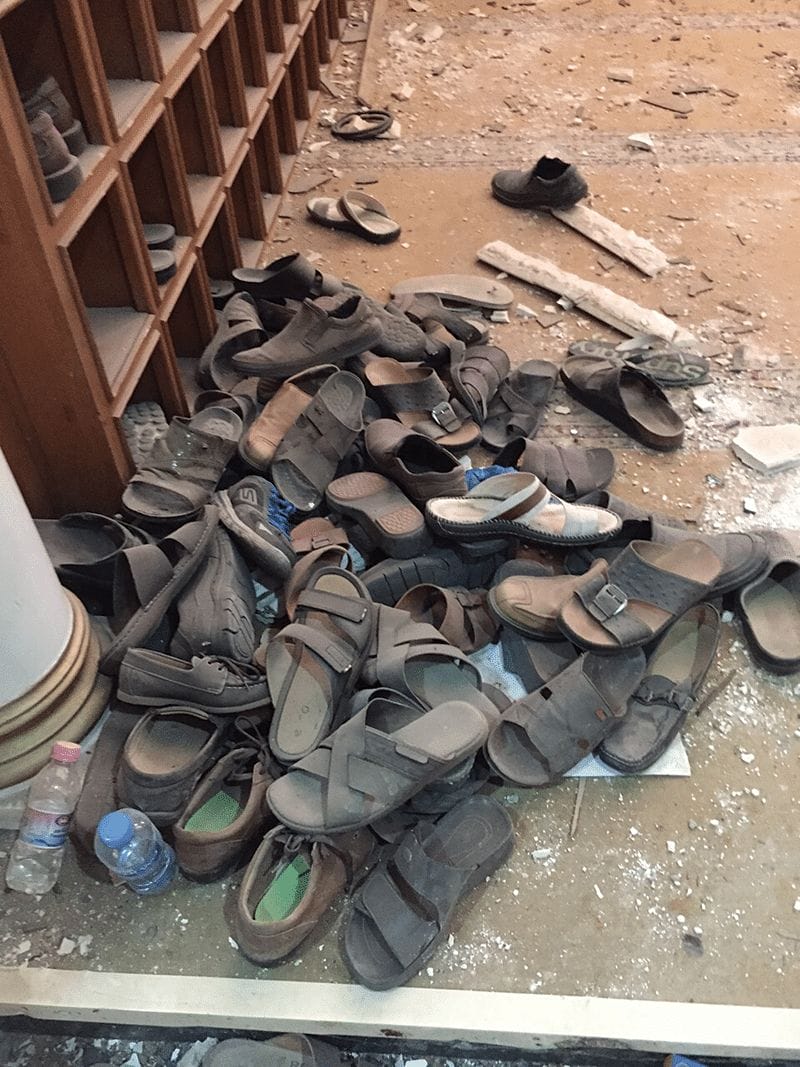
Unclaimed shoes still remain at the mosque since 26th June. Photo: Jamie Etheridge
The arrest of this second cell didn’t trigger widespread panic, but Shiite places of worship are taking greater precautions. Informal citizens’ committees organised by volunteers to act as an added layer of security can be seen frisking worshippers at some Shiite mosques. Kuwait’s Central Bank has tightened money transfer policies in a bid to choke off financing for foreign extremists.
Elsewhere in the Gulf, there is a real concern about who might be next. Qatar and the UAE have been largely spared the type of extremist violence or social upheaval that has occurred in Saudi Arabia and Bahrain. But there have been isolated incidents suggesting that radicals continue to recruit within the region. On 1st December 2014, an Emirati woman stabbed 47-year-old American teacher Ibolya Ryan to death in a bathroom stall at the Boutik Mall on Al-Reem Island in Abu Dhabi. The murderer, Alaa al-Hashemi, was said at her trial to be motivated by Isis calls to “kill Westerners in any way possible” and the authorities found evidence on her computer of visits to Islamic jihadist websites connected to Isis. The woman also planted a homemade bomb in front of an Egyptian-American doctor’s home. It was discovered before it could go off.
Back at the Imam al-Sadiq mosque, al-Haddad stresses his defiance in the face of attacks designed to destabilise the region. “We do not want to live in fear and if you submit to this fear then they succeed. If you think you’re going to make me afraid to step out of my house and go to the mosque then think again.”
Al-Attar shows me blood-spattered Qurans. In Islam, it is considered forbidden to soil or mistreat a copy of the Quran. “These are the same Qurans they [the terrorists] read. What is the difference between our copies and their copies of the Holy Quran?” he asks. He mirrors al-Haddad’s defiance in the face of attack. “I’m more resolute than ever to show there are no differences between us. There is no need for this brutality. We are all Muslims.”
During her visit to the mosque, Jamie Etheridge shot some exclusive footage of what the mosque looks like now, as well as security footage of the attack. We published the clips and Etheridge’s comments on them here.
Slow Journalism in your inbox, plus infographics, offers and more: sign up for the free DG newsletter. Sign me up
Thanks for signing up.
